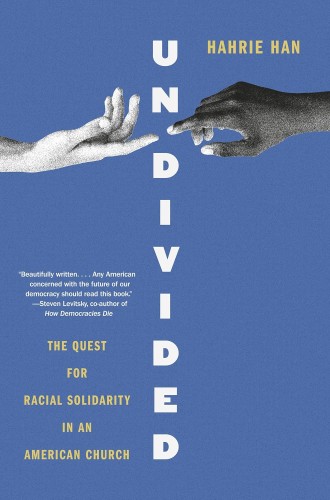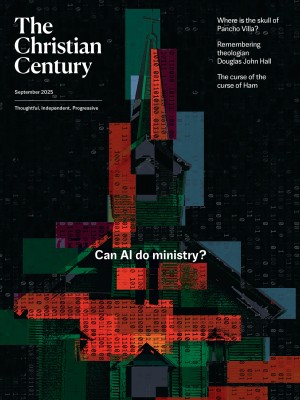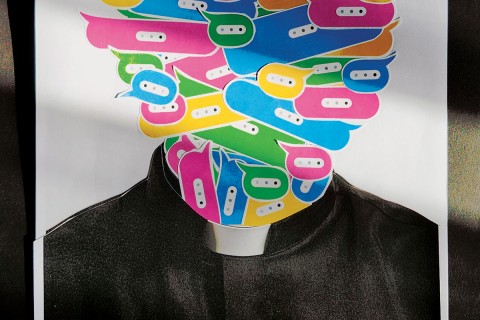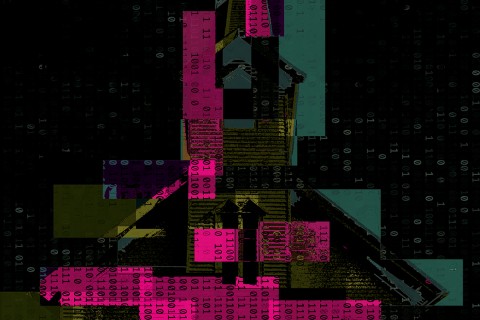Seeking racial solidarity at a Cincinnati megachurch
Hahrie Han follows four people—two Black and two White—through their church’s racial justice program.

Undivided
The Quest for Racial Solidarity in an American Church
Every week, my former boss used to ask: What were your rose, bud, and thorn with your clients this week? Over a voice messaging app, my teammates and I would identify the positives (roses), name any potential areas of growth (buds), and lament the challenges (thorns) of the previous seven days. Although the exercise quickly grew stale, it was useful in the way it begged me to take a 30,000-foot view of various situations and reflect on circumstances both inside and outside my control, things that I could and could not change.
I thought of this exercise when reading Hahrie Han’s Undivided. Chronicled through the perspectives of four participants—a Black woman, a White woman, a Black man, and a White man—in a racial justice program called Undivided at an evangelical megachurch in Cincinnati, the book is equal parts political commentary and narrative nonfiction, sacred literature and cultural analysis. Along the way, Han, who is a political scientist at Johns Hopkins University, daringly tells a story of the positives, the potential areas of growth, and the challenges faced along the way when one church dares ask if racial solidarity might be possible in our country today.
Read our latest issue or browse back issues.
When a “supermajority of Black and white residents passed a ballot initiative to raise their own taxes to fund universal preschool education with targeted resources for poor—mostly Black—communities” in 2016, Han was surprised to hear Cincinnatians repeatedly name one local church as the reason the initiative passed by the largest margin of any new education levy in the city’s history. Systemic change began to knead its way into the educational sector due largely to a program from Crossroads Church, a multi-site megachurch boasting more than 35,000 attendees each weekend, even as the racial justice program “emerged and flourished in a church community often characterized by its infamous commitment to whiteness.”
Perhaps like many justice-seeking readers, I found that the passed ballot initiative alone made me want to raise my fists in the air. It felt like a triumph to read about social change marked not by occasional yard signs and pithy tote bags that “started in a bookstore and ended on their couch,” as Han puts it, but rather by a real, agitating kind of change that makes a difference in the lives of everyday Americans like me. The levy is, in fact, the rose of this story, the shiniest part of a narrative that is instead often marked by messiness, criticism, and disillusionment—even in the midst of what did result in real (and, one can only hope, lasting) change.
The hopeful bud of the story occurs in the very humanness of the four participants through whom Han tells the bigger story, and in the uncanny, truthful, and revealing ways these characters are made known to readers. Since “most white Crossroads congregants were oblivious to systems of racial oppression,” there is an invitation first into personal understanding for Grant and Jess, the two White participants. Jess wonders if she can “differentiate between belief in God and belief in the social institutions—the churches—that taught her about God.” For Chuck and Sandra, the two Black participants, there is an allure to first recognizing and wrestling with their identities as racial minorities, particularly in their predominantly White church environment. More often than not, “within Crossroads, the urge to focus only on relationships was like a magnet pulling away from addressing structural injustice,” leading Chuck, who is also one of Crossroads’ main pastors, to take “increasingly public stances, even controversial ones, on issues of racial justice.”
On any journey, characters morph and change along the way. In Undivided, just as the four experience loss—in friendships, in jobs, and in their marriages, to mention a few—they also experience great gains. Instead of merely discussing the problem of race in America, they become committed to working together to actually solve the problem, which Han says makes all the difference in the end.
The Undivided program quickly comes to distinguish itself from the megachurch by hiring new leadership, creating a “business model to make Undivided financially sustainable,” and eventually separating from Crossroads altogether. There are, of course, critics of the program, and these people are quick to provide a litany of criticisms. To some, the program is “too corporate or too superficial,” while other participants deem it too biblical, and others still not biblical enough. Additionally, because it grows out of a White-dominant community, some people accuse Undivided of ignoring “the long legacy of Black churches and Black faith leaders who have been doing the work for much longer,” not to mention the contributions of other communities of color.
Han does not hold back as she addresses these critiques. But within this judgment, which can certainly be seen as the thorn, not all is lost. Han makes tangible a story that the rest of us—and especially those of us in the church—desperately need to hear. She shows that many of those who journey through the six-week program actually come to do something in the fight for racial justice. It may be true that Crossroads itself “scorned the scourge of racism in people’s hearts, but ignored the way racial subjugation was entangled in American life and the way it molded people’s social interactions, their dreams, their judgments of those who fail, and the workplaces, prisons, schools, communities, and social systems they inhabited.” Still, Han shows how Undivided gives thousands of participants the opportunity to address diversity and confront systemic injustice. Extending beyond the individual transformation that typically marks evangelical communities, theirs morphs into true social transformation as well.
Undivided offers readers a 30,000-foot glimpse into a racial justice program that offers its participants “the spark for a journey that could go in many directions.” As readers will note, although the spark for this journey illuminates a path filled with brambles of roses, buds, and thorns, a bright light still remains.






